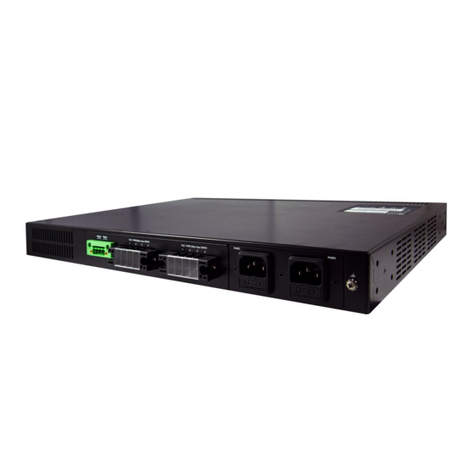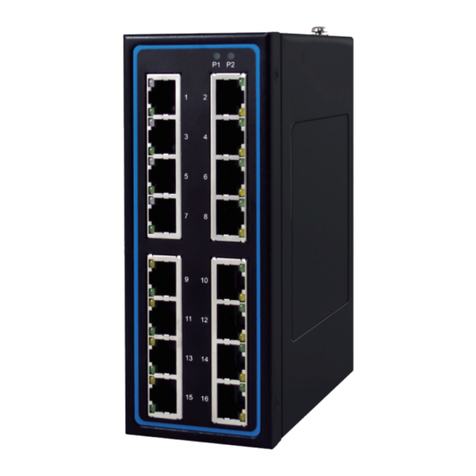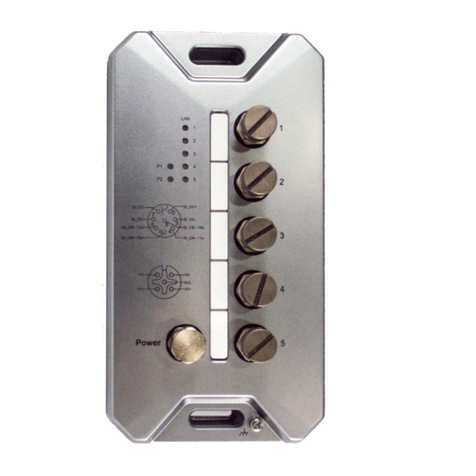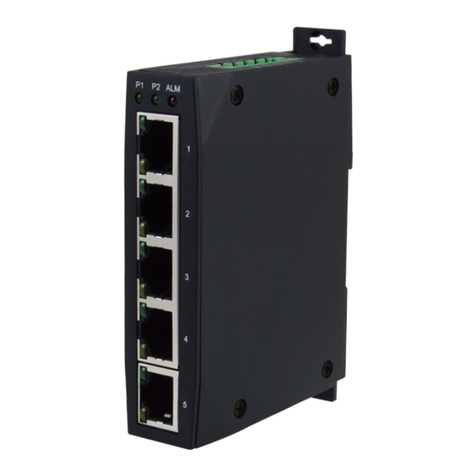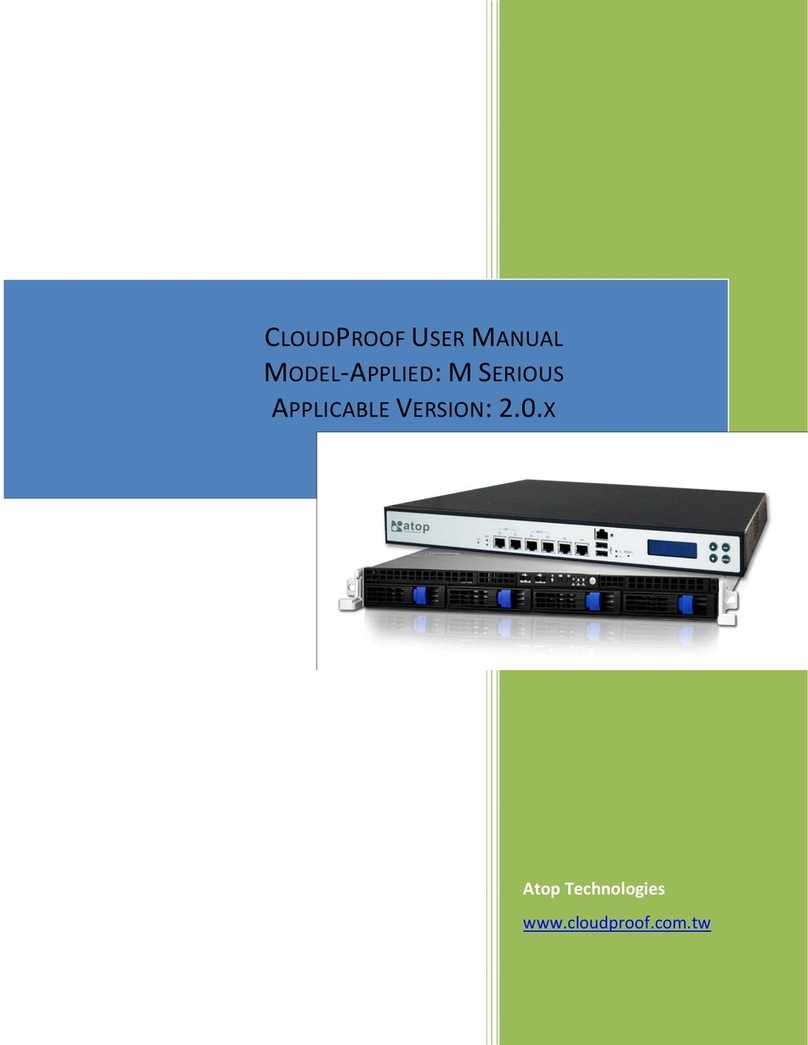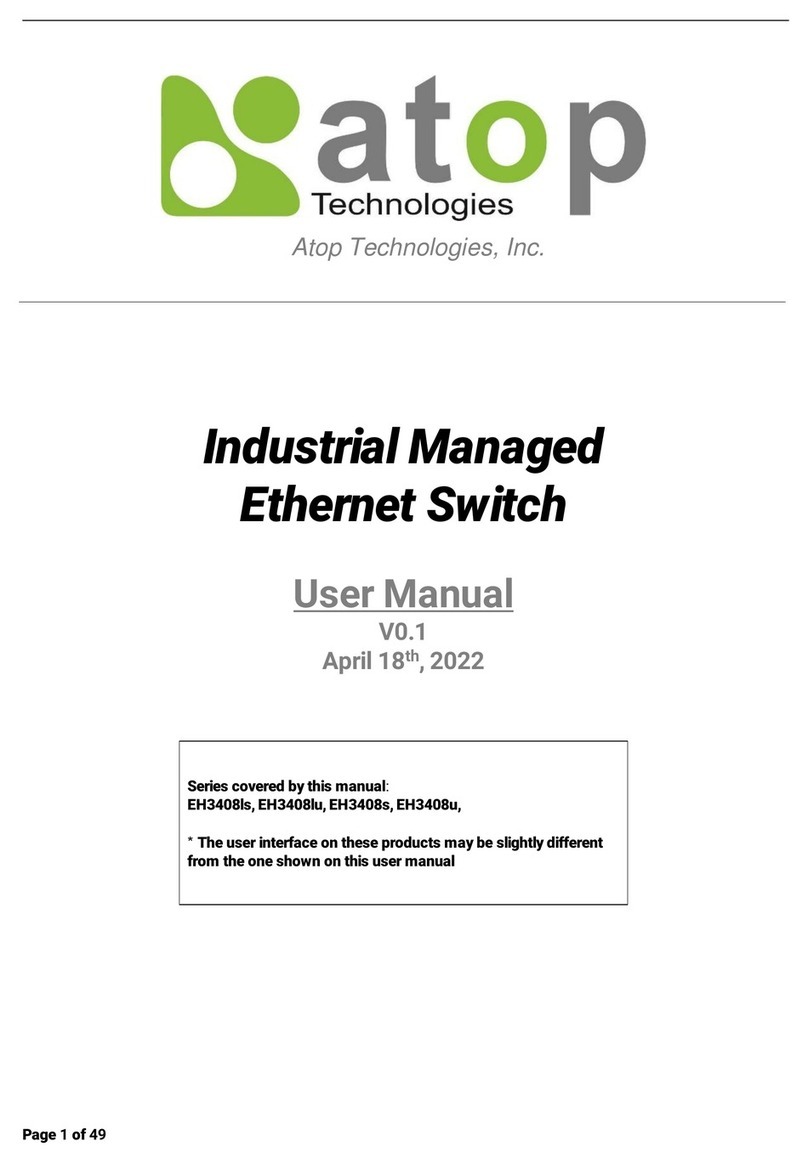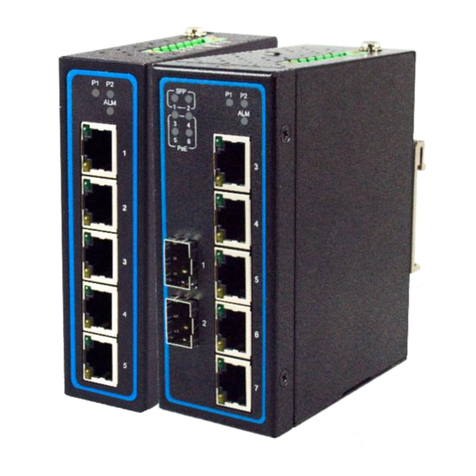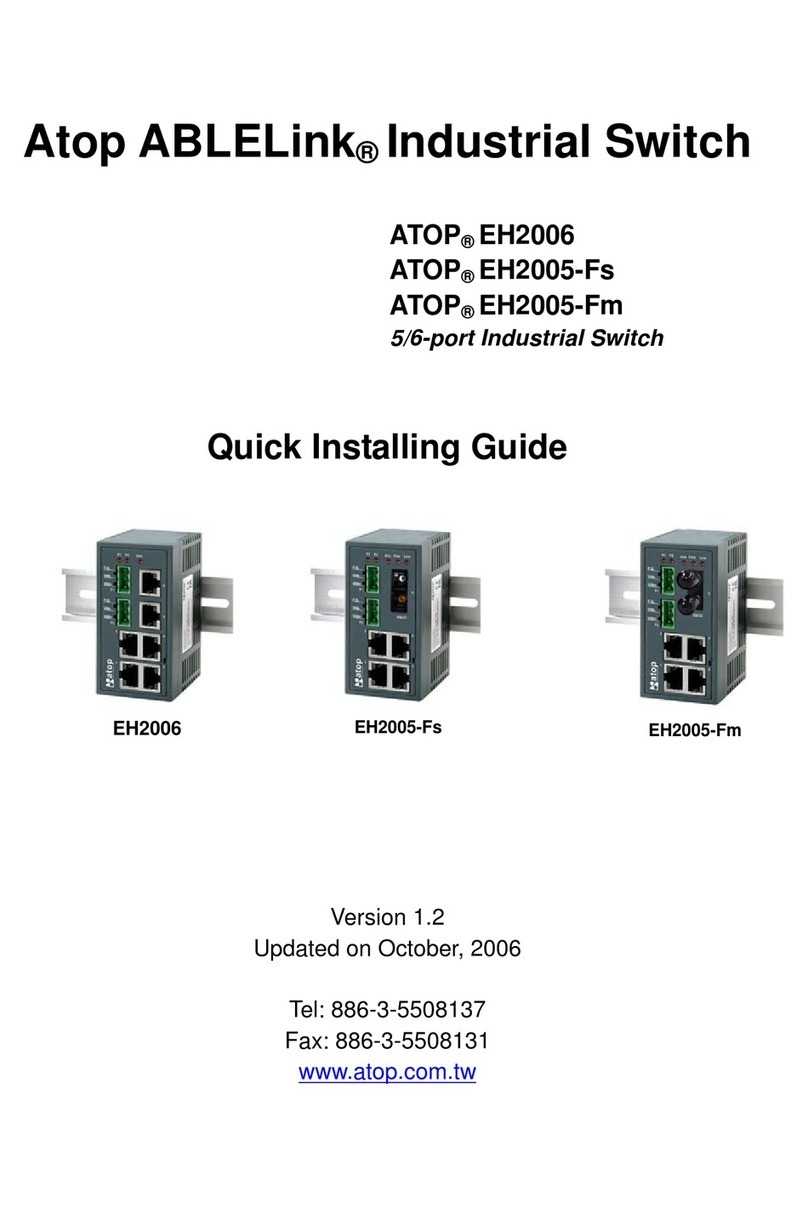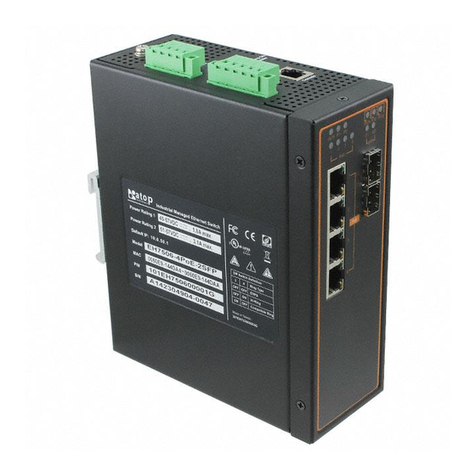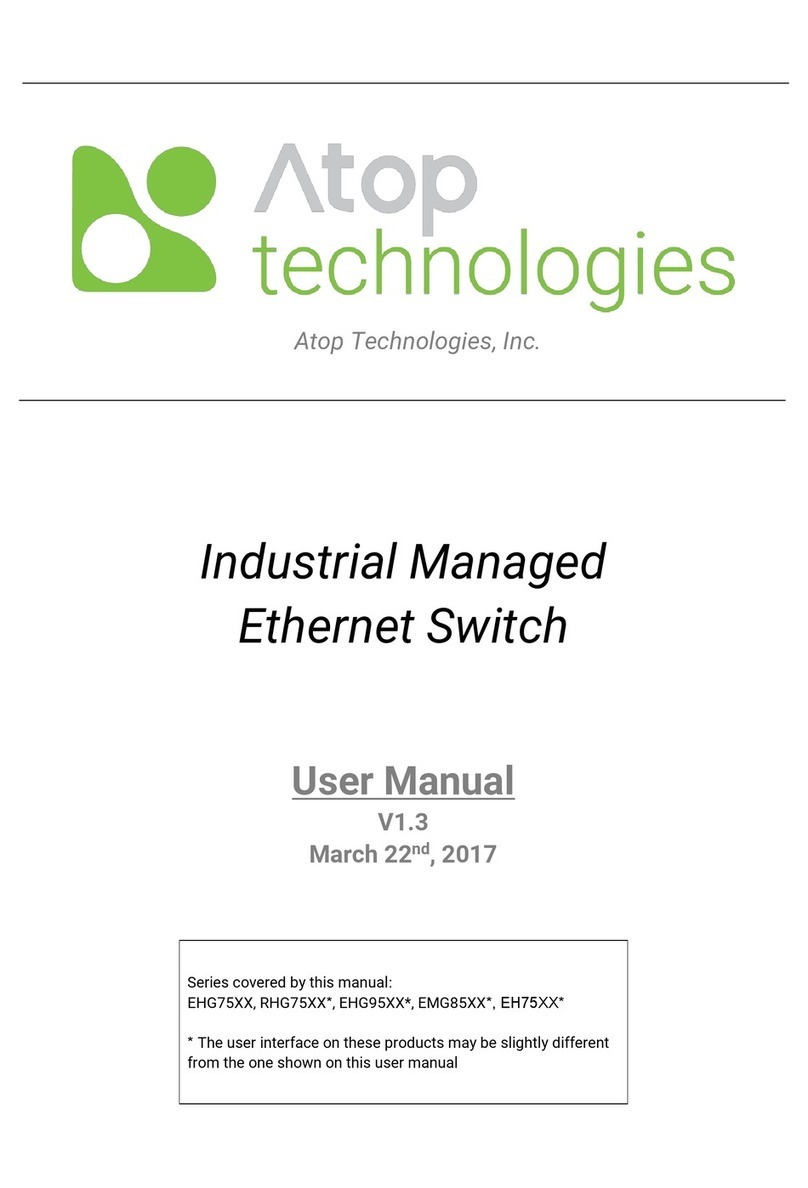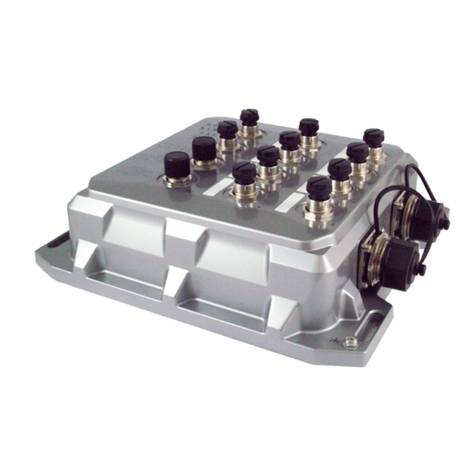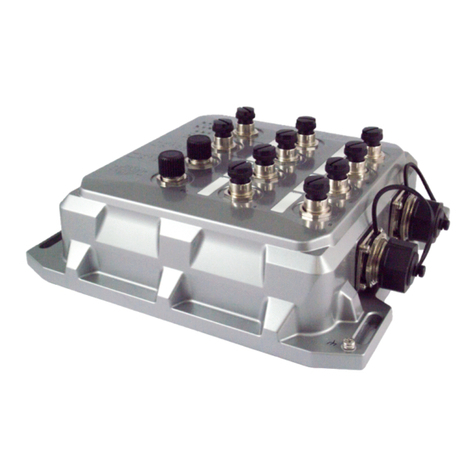Page 8of 223
Figure 2.84 Webpage to Configure LLDP...................................................................................................................102
Figure 2.85 Webpage to Configure SyncE...................................................................................................................104
Figure 2.86 Webpage to Configure MAC Table...........................................................................................................107
Figure 2.87 Example of VLAN Configuration.........................................................................................................109
Figure 2.88 Webpage for Basic Configuration of VLANs.............................................................................................109
Figure 2.89 Webpage to SVL Configuration................................................................................................................113
Figure 2.90 Webpage to Configure MAC-based VLAN of VCL ...................................................................................114
Figure 2.91 Webpage to Configure Protocol to Group Mapping Table...........................................................................115
Figure 2.92 Webpage to Configure Group name to VLAN Mapping Table ....................................................................116
Figure 2.93 Webpage to Configure IP Subnet-based VLAN of VCL .............................................................................117
Figure 2.94 Webpage to Configure Port Classification of QoS......................................................................................118
Figure 2.95 Webpage to Configure Port Policing of QoS..............................................................................................119
Figure 2.96 Webpage to Configure Queue Policing of QoS ..........................................................................................120
Figure 2.97 Webpage to Configure Port Scheduler of QoS ...........................................................................................121
Figure 2.98 Webpage to Configure QoS Egress Port Scheduler and Shapers Port ...........................................................122
Figure 2.99 Webpage to Configure Port Shaping of QoS..............................................................................................123
Figure 2.100 Webpage to Detailed Configure QoS Egress Port Scheduler and Shapers Port ............................................124
Figure 2.101 Webpage to Configure Port Tag Remarking of QoS .................................................................................125
Figure 2.102 Webpage to Configure Each Port Tag Remarking of QoS .........................................................................126
Figure 2.103 Webpage to Configure Port DSCP of QoS...............................................................................................126
Figure 2.104 Webpage to Configure DSCP-Based of QoS............................................................................................128
Figure 2.105 Webpage to Configure DSCP Translation of QoS ....................................................................................129
Figure 2.106 Webpage to Configure DSCP Classification of QoS .................................................................................130
Figure 2.107 Webpage to Configure QoS Control List .................................................................................................131
Figure 2.108 Adding New QCE Configuration .......................................................................................................132
Figure 2.109 Webpage to Configure Storm Policing of QoS .........................................................................................134
Figure 2.110 Traffic Mirroring Operation ...................................................................................................................135
Figure 2.111 Webpage to Configure Mirroring............................................................................................................136
Figure 2.112 Webpage to Detailed Configure Mirroring for Session ID.........................................................................137
Figure 2.113 Webpage to Configure PTP....................................................................................................................138
Figure 2.114 Webpage to Configure New PTP Clock...................................................................................................138
Figure 2.115 Webpage to Configure GVRP Globally...................................................................................................140
Figure 2.116 Webpage to Configure Port for GVRP ....................................................................................................141
Figure 2.117 Webpage to Configure DDMI.................................................................................................................142
Figure 2.118 Webpage to Configure UDLD ................................................................................................................144
Figure 2.119 Webpage to Configure SD Backup..........................................................................................................145
Figure 2.120 Webpage to Configure Modbus Setting ...................................................................................................146
Figure 3.1 Webpage to Monitor System Information .............................................................................................159
Figure 3.2 Summary of Software License..............................................................................................................160
Figure 3.3 Webpage to Monitor System’s CPU Load ............................................................................................160
Figure 3.4 Webpage to Monitor System’s IP Status ..............................................................................................161
Figure 3.5 Webpage to Monitor System’s IPv4 Routing Information Base ............................................................162
Figure 3.6 Webpage to Monitor System’s IPv6 Routing Information Base ............................................................163
Figure 3.7 Webpage to Monitor System Log .........................................................................................................164
Figure 3.8 Webpage to Monitor System Detailed Log...........................................................................................164
Figure 3.9 Webpage to Monitor System’s Power Status .......................................................................................165
Figure 3.10 Webpage to Monitor System’s Digital Input........................................................................................165
Figure 3.11 Webpage to Monitor Port State ..........................................................................................................166
Figure 3.12 Webpage to Monitor Traffic Overview of Ports...................................................................................166
Figure 3.13 Webpage to Monitor Queuing Counters .............................................................................................167
Figure 3.14 Webpage to Monitor QoS Control List Status.....................................................................................167
Figure 3.15 Webpage to Monitor Detailed Port Statistics......................................................................................168
Figure 3.16 Webpage to Name Map......................................................................................................................169
Figure 3.17 Webpage to ERPS Status...................................................................................................................170
Figure 3.18 Webpage to ERPS Detailed Status ....................................................................................................171
Figure 3.19 Webpage to Monitor Dynamic DHCP Snooping Table.......................................................................172
Figure 3.20 Webpage to Monitor DHCP Relay Statistics.......................................................................................173
Figure 3.21 Webpage to Monitor DHCP Server Statistics.....................................................................................174
Figure 3.22 Webpage to Monitor DHCP Server Statistics.....................................................................................175
Figure 3.23 Webpage to Monitor Port Security Port Status All Ports ....................................................................176


